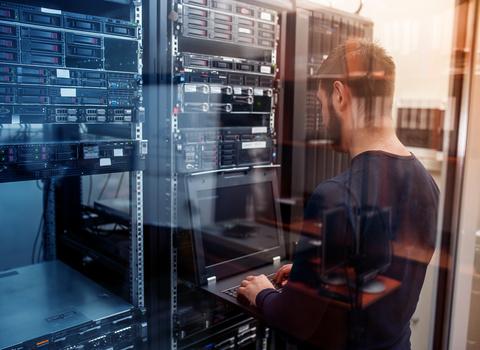When your IT equipment arrives at the end of its life, you have various options: throw it out, sell it to a broker or refurbish it. However, the first option is wrong ecologically. The second is interesting, provided you use a broker that specialises in refurbishment and who will buy your equipment at its fair value. The last option, meanwhile, has both ecological and economic advantages. Refurbishing IT equipment offers a second life for your devices and enables you to enter the circular economy. To explain…
How does refurbishment of IT equipment work?
When your IT equipment is no longer good enough for your business and no longer meets your needs, the question of renewing it arises. But before buying or leasing new computers, tablets or smartphones, what should you do with your old equipment? How can you get rid of it without losing money, and without having too large an ecological footprint?
Refurbishment is probably the most effective response to the environmental challenges facing today's world. It lets you extend the life of your devices, by having them properly renovated.
Practically, refurbishment, which is often carried out by a service provider, involves several stages:
- Buying the equipment at market value.
- Collecting and making an inventory of devices to be refurbished. The service provider
- Carrying out an audit of devices with erasure of data still present in them, in order to comply with current legislation, in particular the General Data Protection Regulation (GDPR) which came into force in 2018.
- Refurbishing the devices. This involves changing all used or defective components so that computers are working well again and ready to be used.
- Reconfiguring the devices.
- Putting them back on the market.
👉 Also read: The life cycle of IT equipment.
The advantages of refurbishing IT equipment
An economic gain
There are many benefits from refurbishing your devices. The first is economic: the equipment is bought, which brings in cash.
You can refurbish devices that you own or lease. It can be part of the services associated with an operating lease, an efficient way of financing the equipment you need through monthly payments. Operating leases include the use of your devices, as well as many other services including maintenance, passing them on to a broker and refurbishment.
An ecological approach
By having your IT equipment taken away and refurbished, you are not scrapping devices that can then have a second life. This is not only environmentally friendly, but also ensures compliance with the laws on waste electrical and electronic equipment (WEEE). IT devices sometimes contain polluting or even hazardous waste, which must be dealt with through specific channels, in accordance with various European directives.
More broadly, this practice enables you to enter the circular economy, which aims to minimise waste and reuse resources in order to preserve them. You will reduce your environmental impact and optimise your CSR (corporate social responsibility) assessment.
A commitment to society
Some companies, such as Olinn, use disabled workers to refurbish IT equipment. This means helping groups who struggle to get jobs to have access to the labour market and developing your social responsibility. IT refurbishment is therefore a real asset for the planet and for people!
👉 Also read: CSR: a performance lever for companies.
Olinn supports you in your CSR strategy !



